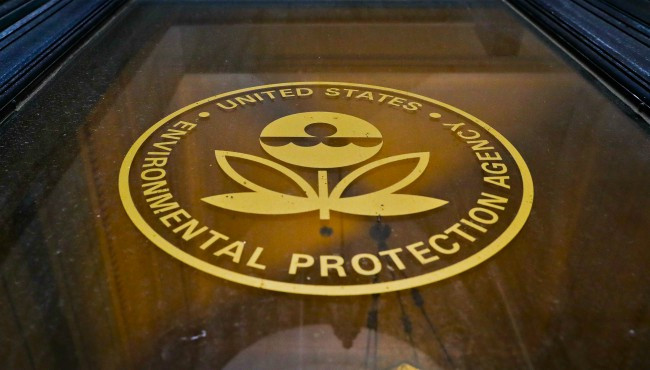Commentary
Even as President Donald Trump kept his promise to roll back unnecessary regulations that hamper U.S. economic competitiveness and job creation, his administration demonstrated its commitment to cleaning up the environment and keeping statutory deadlines for making environmental decisions.
Trump’s efforts to spur significant economic growth and create high-paying jobs began shortly after his inauguration, when on January 30, 2017, he signed Executive Order 13771, directing agencies to issue at least two deregulatory actions for every new regulatory action.
The U.S. Environmental Protection Agency (EPA) exceeded this goal by removing five outdated or unnecessary regulations for every new regulation it imposed. As of July 2020, EPA finalized an estimated 64 deregulatory actions, reducing the regulatory costs on businesses and individuals by $94 billion. EPA has an additional 39 deregulatory actions in process, which should further reduce regulatory costs by billions.
Even better, these actions will expand consumer freedom by leaving products they like on the market. And, more importantly, it will leave more money in their pockets to spend on the goods and services they, as opposed to regulators, find most vital.
Despite claims that the Trump administration’s regulatory reform efforts have harmed the environment or human health, the effort to streamline regulations and focus on the agency’s core functions have paid big environmental dividends.
From 2017 to 2019, emissions of each of the regulated criteria pollutants declined: carbon monoxide was reduced by 8 percent; lead by 20 percent; nitrogen oxide by 14 percent; ozone by 6 percent; particulate matter 2.5 by 4 percent; sulfur dioxide by 35 percent; and volatile organic compounds by 5 percent. This amounts to an overall decline of criteria air pollution emissions of 7 percent under the Trump administration, during which time the number of days listed as unhealthy for especially sensitive or at-risk populations and groups (children, the elderly, etc.) dropped by 40 percent.
The Trump administration’s record for cleaning up potentially toxic Superfund waste sites is just as impressive. In its first three years, Trump’s EPA has cleaned up and removed more sites from the Superfund’s National Priorities List (NPL), the sites posing the greatest danger to human health, than the Obama administration did in its best three-year period. In 2017 Trump’s EPA delisted 18 NPL sites, six more removals than in the best year registered by the Obama-era EPA. The 27 sites delisted or partially delisted in 2019 comprise the highest number of sites certified as cleaned, since 2001.
Under the 1970 Clean Air Act (CAA), the EPA is required to set national standards for regulated pollutants, with an adequate margin of safety to protect public health and welfare. The law also requires the agency to review these standards every five years to confirm whether the best available science shows the standards do in fact adequately protect public health, If they do not, the EPA must implement new standards.
Under previous presidential administrations, the EPA has regularly and repeatedly failed to review the air pollution standards by the legal deadline, sometimes missing the date by five years or more. This has sparked numerous lawsuits from environmental groups to force the government to conduct the reviews. The Obama administration failed to meet the CAA’s review provisions.
Not so with the Trump administration. Thus far, two criteria pollutants were due for review by the EPA during Trump’s first term, and the agency completed its reviews by the deadline. In July, the EPA announced it is leaving in place the current air quality standards for ground-level ozone because the best available science indicates they sufficiently protect human health.
This followed a scientific review EPA completed of particulate matter in April, at which time the agency concluded current standards remain justified.
Nor has the Trump administration been content simply to update existing environmental standards. In June, the EPA granted nearly decade-old petitions to add the chemical compound 1-bromopropane to the list of hazardous air pollutants regulated under the CAA. In July, much to my dismay, the Trump administration rewarded climate alarmists by proposing first-time-ever mandatory restrictions on greenhouse gas emissions from aviation manufacturers.
All this progress has taken place even as the EPA has been saddled with the emergency responsibility of analyzing and certifying the safety of new disinfectants in response to the coronavirus pandemic. On July 23, EPA certified 32 new surface disinfectants for the agency’s list of products expected to kill the novel coronavirus that causes COVID-19. Since the beginning of the COVID-19 pandemic, EPA has approved more than 460 products as disinfectants for surfaces, as personal sanitizers, or as protective equipment.
President Trump can be accused of a lot of things, but leaving the environment or public health in the lurch in the pursuit of making America great again isn’t one of them. Trump has promoted U.S. economic, energy, and national security, all while helping the environment to be the cleanest it’s been since the beginning of the 20th century.
This is an edited version of a column that originally appeared in the Epoch Times.



























[…] This article was originally published by the Heartland Institute. […]